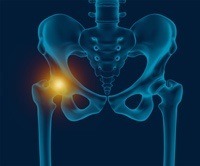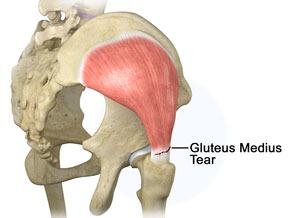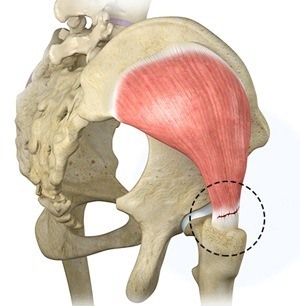- Femoroacetabular Impingement
-

- Femoroacetabular impingement (FAI) is a condition characterized by excessive friction in the hip joint from the presence of bony irregularities. These cause pain and decreased range of hip motion.
-
- Hip Pain
-

- Hip pain, one of the common complaints, may not always be felt precisely over the hip joint rather in and around the hip joint. The cause for pain is multifactorial and the exact position of your hip pain suggests the probable cause or underlying condition causing it.
-
- Hip Injury
-

- This is an injury to the labrum, the cartilage that surrounds the outside rim of your hip joint socket. A tear in the labrum of the hip can result from traumatic injury, such as a motor vehicle accident or from participating in sports such as football, soccer, basketball, and skiing.
-
- Hip Labral Tear
-

- A hip labral tear is an injury to the labrum, the cartilage that surrounds the outside rim of your hip joint socket.
-
- Gluteus Medius Tear
-

- A gluteus medius tear is the partial or complete rupture of the gluteus medius muscle due to severe muscle strain. Gluteus medius tears often occur at the tendinous attachment to the greater trochanter of the femur bone.
-
- Gluteus Tendon Tear
-

- The gluteal muscles (situated in the buttocks) are necessary for the stability and movement of the hip joints. The tendons of two gluteal muscles (gluteus medius and gluteal minimus) are attached at the outer hip region and are often called the “rotator cuff of the hip.”
-
- Snapping Hip Syndrome
-

- Snapping hip syndrome is a condition in which you hear or feel a snapping sound in the hip when you swing your legs, run, walk or get up from a chair. The sound can be experienced in the back, front or side of the hip.
-
- Hip Bursitis
-

- Hip bursitis is a painful condition caused by the inflammation of a bursa in the hip. Bursae are fluid-filled sacs present in the joints between bone and soft tissue to reduce friction and provide cushioning during movement.
-
- Hamstring Injuries
-

- The hamstring is a group of three muscles that run along the back of the thigh from the hip to the knee. Hamstring injuries occur when these muscles are strained or pulled. They are common in dancers and athletes of all sorts including runners and those who play football, soccer, basketball, tennis, etc.
-

